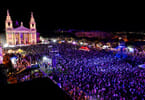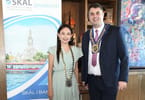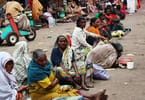Few people have the chance to shape an island and a nation in more ways than one. For our younger generation, a trip down our historical memory lane will no doubt reveal that each island has produced remarkable iconic “personages.” They were influential and instrumental in their devotion and dedication to advance their “cause celebre.”
On this anniversary of the passing away of Karl St. Ange, we pay homage to this La Digue hero – a strong willed gentleman from the island’s plantations and the “Cabanes des Anges” – who is today remembered as the politician who brought a human touch to Seychelles politics.
While growing up, young Karl cultivated the land with an aura of disciplined, hard-working ethic and became the island’s most respected native son. His strong personality and leadership skills turned him into a natural born leader whose tenacity and steadfastness contributed immensely to the advancement of La Digue.
He was first and foremost a planter who then pioneered tourism on La Digue and reluctantly turned to politics in order to shape the future and destiny of his country.
THE PLANTATION DAYS & THE AUSTIN
Ton Karl (as he was affectionately called) was born on La Digue on December 31, 1919 and died on his beloved island at the vintage age of 89, on May 7, 2009. He was the only son of Bourbon (Reunion) Island farmers, Kersley and Josephine St. Ange and he worked the land alongside his parents; becoming one of the island’s biggest producers of coconut, patchouli and exporters of vanilla.
The family owned a large coconut plantation with its drying kiln (kalorifer) and an ox drawn mill for the extraction of oil. They then introduced vanilla and started the intense cultivation of the orchid to become one of the biggest producers and exporters of the Seychelles vanilla pods. The young, energetic Karl cut his teeth and developed an entrepreneurial spirit which elevated La Digue into the league of the world’s main vanilla exporters, trading over one and a half tons a year with the Kimpton Brothers of London. The St. Ange La Digue Vanilla earned Seychelles great recognition in 1960 through quality tests carried out by the Tropical Products Institute of London.
Ton Karl’s family was also the first to introduce a patchouli distillery to La Digue in 1936. To keep this distillery going, they bought patchouli leaves from all over La Digue and Praslin. In 1942 they introduced electricity to the island with a small DC electric generator, later upgrading to a self-starting AC generator. They were also the first household to have a radio set – a vital piece of information dissemination during this era.
Having acquired several land tracts as plantations, the St. Ange family was firmly established as the leading visionaries who would shape La Digue’s destiny for several decades. Following in the footsteps of the Rassool family who brought the fist motor vehicle to the island in 1935, Ton Karl was beaming with pride when he sat at the wheel of the family Austin car that arrived on La Digue in the early 1950s.
THE LITTLE RED SHIP & BIRTH OF THE OX-CART
The early days of tourism in Seychelles will also be remembered for the “Lindblad Explorer.” This little red cruise ship was fostering expeditions and adventure cruises around our archipelago in the early seventies under the stewardship of Dr. Lyall Watson. Ton Karl was appointed the ship’s agent on La Digue, handling the tours for all the passengers whenever the ship called. It was together with Dr. Lyall that Ton Karl designed and built oxcarts to carry the disembarking tourists on tours, thus creating the island’s iconic (and probably the country’s most photographed) mode of transportation.
As every astute entrepreneur, Karl St. Ange had morphed his businesses to evolve with the times. Seeing that plantation life was on the wane, he converted the cargo carrying flat bed, bull and axle contraption into an attractive, hooded vehicle, bedecked with coconut leaves and flowers, that would become synonymous with the island’s unhurried, laid back atmosphere. Seizing on the opportunities that the newly built airport ushered in, he ventured into the hospitality trade.
THE TOURISM PIONEER & HIS “CABANES”
Ton Karl was a people’s person. His affable and gregarious personality turned him into a successful hotelier. Following the inauguration of the Seychelles International Airport in 1971, he decided to open his very own “Cabanes des Anges” hotel on La Digue. Whilst new international hotel chains were setting up shop on Mahe, he ushered in a unique, authentic style of tourism, developed by a Seychellois for the benefit of the Seychelles tourism industry.
The “Cabanes des Anges,” with its unique name was an instant hit. It was a small, friendly, family styled establishment with a management flair centered on the hotel guests. He designed his complex all by himself at a time when the hotel trade was very much in its infancy. He wanted his restaurant with a “feet in the sand” feeling and a bar area with breathtaking views of the daily sunsets over Praslin island.
The bungalows were hexagonal in shape with a central pillar made out of a coconut trunk with the roof thatched in coconut leaves. All the wood for the construction was local, as he wanted the native Diguois craftsmen to benefit from the upcoming tourism development. “Cabanes des Anges” was the true authentic island-style bungalows with a homely feel. And back in the 70s, Ton Karl was already providing his guests with a “pieds dans l’eau” holiday experience – which is today the most sought after escapade of the modern day traveler.
HISTORICAL HERITAGE & CHATEAU ST. CLOUD
The several generations of the St. Ange family took on the noble task of developing their newly adopted island, determined to improve on its infrastructure. They undertook the construction of a road linking the main La Digue coastal road to the inland’s circular interior road and called it “L’allee Kersley.” In those days, this was seen as the biggest project undertaken by a private individual on La Digue. The plateau on which stood the road, now referred to as Plateau St. Cloud, was formally a deep and extensive marsh, so deep in places that even cattle would occasionally drown.
Leading up this alley road is the family crown jewel, the Chateau St. Cloud. Home to several generations of the family, it was named after the birthplace of Karl’s granddad in France and was built by François Mellon. It was the most imposing wooden edifice of La Digue dating back to 1903. After several renovations and extensions, the ‘chateau’ is still standing – proudly portraying its colonial heritage with an imposing façade – as it welcomes numerous hotel guests.
THE SEASONED POLITICIAN WITH A BIG HEART
Not content with the way things were turning out during the colonial era, Karl St. Ange decided to dabble into politics. He was adamant to help change the course of our country’s destiny. His tenacity and determination coupled with his powerful oratory skills turned him into one of the most seasoned politicians that La Digue (or even Seychelles for that matter) had ever known. And a formidable opponent he was, winning most elections and diligently advancing his fellow islanders’ causes and agenda.
With the formation of the SPUP in 1964, Karl St. Ange became its vice president and worked tirelessly to advance the party principles. From 1967 to 1970 he was the elected Member of the Governing Council representing La Digue & the Outlying Islands. He was not shy when he wanted to make a point. In one session of the Governing Council, he defied convention by addressing the members in French, taking the British Governor by surprise as he was compelled to adjourn the session to seek the services of an interpreter!
From 1970 to 1974 he was the elected Member of the Legislative Assembly representing La Digue & the Inner Islands. Ton Karl was also instrumental in paving the way for our country’s independence. He was a member of the delegation at the historical first Constitutional Conference in London in 1970.
In 1979 President F.A Rene appointed him as the Minister for Agriculture and in 1981 he headed the Health ministry.
Ton Karl executed his official functions with dignity and diligence, earning him respect and reverence, especially on his many travels to represent our young nation internationally.
THE BON VIVANT & SEASONED FAMILY MAN
Ton Karl lived life to the fullest. His influence both on his native island and his country is immense. An illustrious sage in his latter days, this kind-hearted bon vivant would always go out of his way to help people. He will be remembered as the La Digue personality who could move happily around Seychelles even when he retired from public life. During his retirement days, he lived in his beachside bungalow at Anse Reunion. His imprint on La Digue, despite the fading of the plantations and his cherished ‘Cabanes’ is still evident.
Karl St. Ange married Germaine de Charmoy Lablache of Praslin in October
1942 and they had seven children, namely Kersley (retired in Durban, South
Africa), Marie (died at birth), Marston (of Chez Marston hotel of La
Digue), Myriam (of Chateau St. Cloud hotel), Alain (the Minister of Tourism & Culture), Perin (the Director for Africa of IFAD based in Rome) and Jose (a real estate manager in Hope Island, Australia).
Ton Karl maintained staunch family values, showered his children with love and affection and brought them up to the best of his ability. He worked the land hard on La Digue to ensure that his children were afforded the best education.
Being such a popular man, Ton Karl was no doubt a bit of a local “Don Juan!” And if any proof of his exploits was required, the numerous children of Karl St. Ange came out of the woodwork to fill many a bench at the Cathedral at the recent funeral of Claude Moise.
HIS LEGACY LIVES ON…
Several books have documented the life and achievements of this illustrious Seychellois. His son Alain published “Seychelles… Remembers Karl St. Ange” and a book by historian Julien Durup entitled “History of La Digue” gives a good insight of this La Digue personality, especially his farming years whilst working with his parents.
Words by President James Michel read at his funeral refers to Karl St. Ange as “an historic figure – to a great son of Seychelles, to an icon of La Digue, to a patriot, but above all to a great friend, who inspired us in more ways than one.
“He was a self-effacing, modest man, with a biting wit and a great sense of humor. Ton Karl was a man of the people, listening, caring, proffering advice, and lending a hand here and there. He was never afraid of speaking his mind”.
And in a nutshell (or rather vanilla pod!), this was the good old Ton Karl who touched the lives of many a Seychellois. He was buried on his beloved island in a colorful ceremony where practically the whole island lined the road to pay a final farewell to his oxcart driven cortege. He is surely enjoying his hereafter days in his “cabane” somewhere up there in the clouds with his bevy of angels in tow.
WHAT TO TAKE AWAY FROM THIS ARTICLE:
- Following in the footsteps of the Rassool family who brought the fist motor vehicle to the island in 1935, Ton Karl was beaming with pride when he sat at the wheel of the family Austin car that arrived on La Digue in the early 1950s.
- The young, energetic Karl cut his teeth and developed an entrepreneurial spirit which elevated La Digue into the league of the world's main vanilla exporters, trading over one and a half tons a year with the Kimpton Brothers of London.
- He was first and foremost a planter who then pioneered tourism on La Digue and reluctantly turned to politics in order to shape the future and destiny of his country.






















